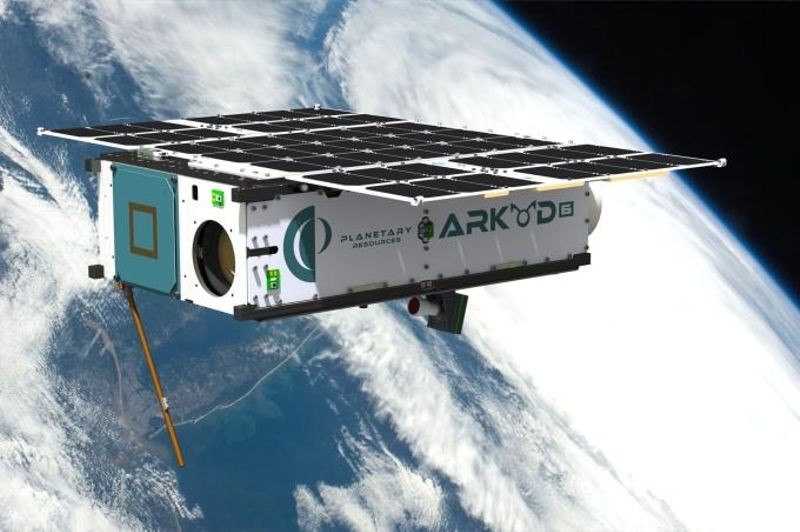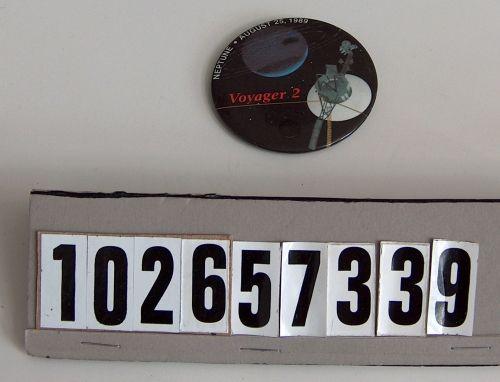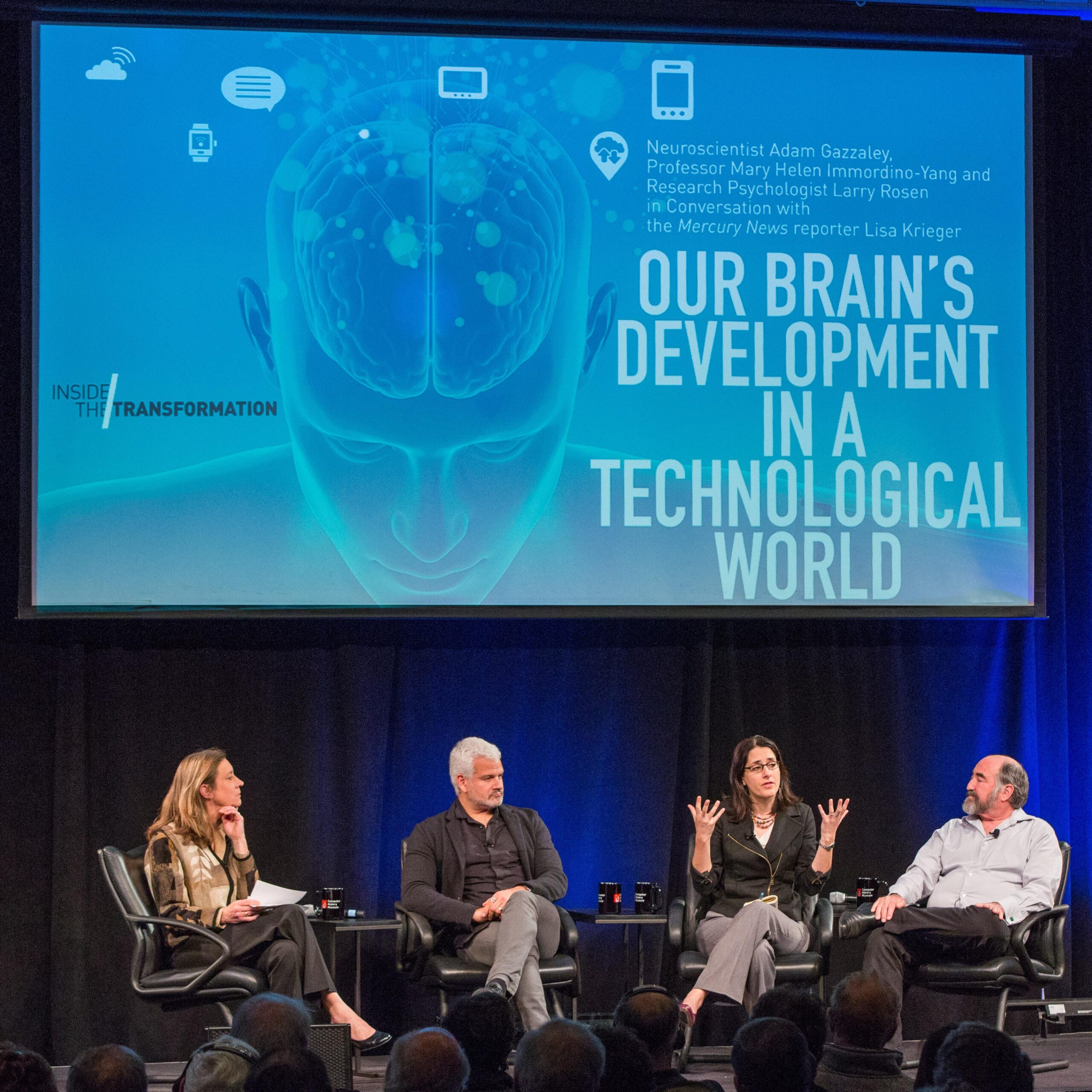
This event was broadcasted live via Facebook Live. Watch all future events live on the Museum’s Facebook page.
CHM Live’s “Hunting for Space Treasure,” with Planetary Resources CEO Chris Lewicki in conversation with Museum CEO John Hollar on March 9, 2017.
Today, the potential for space exploration seems to be taking off. Jeff Bezos’ Blue Origin has successfully launched a reusable rocket. Scientists at the National Science Foundation’s LIGO discovered gravitational waves, confirming Einstein’s vision of ripples in the space-time continuum. And putting a human on Mars has become a goal NASA and Elon Musk hope to achieve in our lifetimes. However, these organizations all face a major limitation in their quests to reach infinity and beyond: a lack of resources in space.
Seattle-based Planetary Resources wants to solve this problem by utilizing a relatively close asset: asteroids. The space startup is developing technology to mine asteroids for valuable minerals and, more importantly, water. In conversation with Museum CEO John Hollar on March 9, Planetary Resources President and CEO Chris Lewicki shared why the company is specifically focused on asteroids.
As “leftovers” from the formation of the solar system, asteroids carry an abundance of water, a versatile and valuable resource in space. It can shield travelers and spacecraft from cosmic rays and be converted into an extremely efficient rocket fuel. Readily available fuel is crucial, as spacecraft burn the majority of what they can carry as they exit the first 300 kilometers of Earth’s gravity well. Beyond those first 300 kilometers, much less fuel is required to propel a spacecraft to anywhere in the inner solar system. (See the video below for an illustrated explanation.)
The Market Problem & Radical Solution—Why prospecting and staking claim on asteroids drive economic growth into the Solar System.
Asteroids are also an ideal resource because of the relatively minimal energy required to reach them from Earth. “It’s even easier than getting to the surface of the moon,” said Lewicki. “It’s kind of the beachfront in the new real estate that we are going to be developing and hopefully setting up homes and businesses on.”
The first step toward this goal is identifying the best location in space to begin the mining process. Lewicki and his team are launching “robotic geologists” into space to assess the accessibility and water content of several near-Earth asteroids. By better understanding the materials and environment around near-Earth asteroids, Planetary Resources can start designing the tools and technology to extract the materials. “It’s going to happen in a way that’s different from what you do on Earth,” said Lewicki.”On Earth you have to take into account how much things weigh, and diesel and labor and environmental regulations... You don’t have any of those problems in space.”

One of Planetary Resources’ “robotic geologists” is the Arkyd 6, built in Redmond, Washington. It is scheduled to launch later this year. It will be used to test the company’s prospecting and space-based observation technologies. (Image Courtesy of Planetary Resources)
Planetary Resources envisions the mining process as being totally autonomous. “No astronauts will be necessary,” Lewicki said. “The same reason we’re not going to need people to drive our cars very soon and the same reason why we have surgical robots... we can use those technologies to put robots in a dangerous, non-life-supporting environment and do this thankless work on a barren rock orbiting the sun.”
However, asteroid mining isn’t Planetary Resources’ only project. The company has also created the first-ever commercial mid wavelength infrared sensor, which it added to the spacecraft sent into space to study asteroids. These sophisticated sensors can detect water and thermal signatures, enabling them to to capture incredibly detailed data about Earth. “What we see with other imaging technologies is the same thing we get with our eyeballs... I can take a picture of a car engine, and whether that engine is running or not you have no idea. It’s gray,” Lewicki said. “But if you take a thermal image of that car engine, it’s night and day. Not only can you tell if it’s running or not, but you know that it used to be running and if the car drove away, you could see the warm spot it left in the parking lot.” This imaging system could enable better tracking of crop growth, forest fires and even climate change.
In addition to developing technology for asteroid mining, Planetary Resources has created a highly sophisticated space-based observation system called Ceres.
Based in Redmond, Washington, the company has focused on asteroid mining since it was founded in 2009. It was originally named Arkyd Astronautics, derived from Arakyd Industries, a resource-hunting droid developer in the Star Wars universe. After several years in stealth mode, the company announced its asteroid mining plans in 2012. Since then, it’s attracted investment from Larry Page, Richard Branson and Eric Schmidt. Planetary Resources’ co-founders, Peter Diamandis and Eric Anderson, invited Chris Lewicki to join the company in 2010.
Chris Lewicki tells us why he made the giant leap from NASA to Planetary Resources, which was in its infancy when he joined the company as chief engineer.

NASA’s Voyager 2 was the first spacecraft to fly by the planet Neptune. Pictured is a button commemorating the mission. Collection of the Computer History Museum, 102657339
Lewicki’s interest in space began in childhood. “I remember in eighth grade watching the newspapers... or on the evening news Flying by the Planet Neptune,” Lewicki said. “It was this blue dot that was out there on the edge of the solar system... And then one day, all at once, it was a place. There were clouds and there were moons... It was something where I realized ‘I want to do that.’”
He left his home state of Wisconsin to study aerospace engineering at the University of Arizona and started participating in NASA missions as a student. After graduating, he started working at NASA full-time, going on to work closely on Mars Rovers and the Phoenix Mars Lander. He was Flight Director for the rovers Spirit and Opportunity, and the Surface Mission Manager for the Phoenix Mars Lander. Lewicki even has an asteroid named after him: 13609 Lewicki.

“Our Brain’s Development in a Technological World: Neuroscientist Adam Gazzaley, Professor Mary Helen Immordino-Yang, Research Psychologist Larry Rosen in Conversation with Lisa Krieger of the San Jose Mercury News,” CHM Live, February 15, 2018.
“We live in really extraordinary times. We’re witnessing an explosion in the diversity and the accessibility of these amazing computers that we carry in our pockets and have on our desks,” said Lisa Krieger of the San Jose Mercury News. The CHM Live event, “Our Brain’s Development in a Technological World,” held at the Computer History Museum (CHM) on February 15, consisted of a panel discussion about how technology affects our brains and learning, with a focus on its impact on youth. The panel was moderated by Krieger, and members of the panel included: Adam Gazzaley, neuroscientist and founder and executive director of Neuroscape; Mary Helen Immordino-Yang, professor of Education, Psychology, and Neuroscience at the University of Southern California; and Larry Rosen, research psychologist and professor emeritus at California State University at Dominguez Hills.
Gazzaley began by introducing basic information about the brain, focusing on the two major roles our brains have: to “sense things” and then to “respond.” According to Gazzaley, these functions are important because of how they relate to cognitive control. Cognitive control allows us to create meaning around us. It allows us to focus, controls our working memory, and manages our goal setting abilities. These three roles play a major part in how our brains work and, in turn, how we function.
Adam Gazzaley discusses how our brain’s limitations interact with our goal setting abilities. He refers to this as “the distracted mind.”
Larry Rosen discussed how technology can impact our anxiety by highlighting our natural need for, and the pressure around, constant connectivity. According to consumer research, technology is reaching consumers faster and faster. As consumers engage with more technology, they also claim that their ability to multitask is growing—however that may not be true. While people think they can successfully multitask, the reality is we are incapable of successfully focusing on multiple things at once; however, the desire to use technology for multiple purposes increases the more time we spend on our devices. This need to be using technology constantly has led to discussion about technology addiction. But Rosen believes that people’s connection to technology is not the same as addiction, stating, “Addiction should give us some sort of a good feeling, a pleasurable feeling. ” He believes technology is more like an obsession or compulsion, which gives us an anxious feeling when we haven’t “checked in.” Rosen went on to say, “What we are feeling is a lot of pressure that we have to connect, that we feel a responsibility to connect, and that’s the anxiety-provoking part.”
Larry Rosen talks about a experiment he did with his students that looked at how long they were on their phones each day.
Mary Helen Immordino-Yang talked about how using technology affects the brain, especially the adolescent brain. She suggested that the constant use of technology is hijacking one’s ability to form high-level meaning within their environment. Immordino-Yang goes on to clarify that technology isn’t necessarily the problem, but the way in which we use technology to set expectations and receive validation is where issues can arise. Facetiming with a family member across the world is not the issue, however the need for “likes” on social media could be more problematic. For youth, this need for immediate attention can impact one’s identity by potentially creating a superficial view of self.
Mary Helen Immordino-Yang shares findings from her lab regarding the effects of technology on youth development.
The panel continued to evaluate how the pervasiveness of technology impacts our brains and society’s overall well-being. Issues such as distraction and the digital divide were suggested as examples of how technology has impacted the brain’s ability to develop. Multitasking continued to be brought up as one of the largest negative effects of technology. Our need to look at multiple screens for a variety of purposes and tasks has affected our ability to learn, reason, and remember because of our inability to truly focus on numerous things at once. Another major concern with technology, the panel asserted, is that people are not using technology to create but to consume.
The evening ended with a discussion about how technology can be used in educational settings. Rather than calling for a complete ban of technology in classrooms, the panel advocated for educators to consider ways that technology could be integrated and used in positive ways. Strategies were as simple as moving personal or unnecessary technology devices into another room, or taking breaks to practice mindfulness exercises. Gazzaley even discussed a game his company is working on that could be a non-drug alternative for youth with ADHD.
Technology is not going anywhere. In fact the opposite is happening. But as technology continues to become further embedded in our everyday lives so does a better understanding of its effects on our brains and, with that, a better ability to integrate and use technology in positive, meaningful ways.
“Our Brain’s Development in a Technological World: Neuroscientist Adam Gazzaley, Professor Mary Helen Immordino-Yang, Research Psychologist Larry Rosen in Conversation with Lisa Krieger of the San Jose Mercury News,” CHM Live, February 15, 2018.
In addition to a prolific career at NASA, Planetary Resources CEO Chris Lewicki has an asteroid named for him: the 13609 Lewicki.
As a long-time, self-proclaimed “space nut,” Lewicki is excited about what the future holds for space exploration. “I think what really excites me every day about what we’re doing is having the opportunity in the next 10, 20 years for space to be a place not just for astronauts, not just for billionaire space tourists, but a place where more and more people live and work and play,”
Planetary Resources CEO Chris Lewicki explains how space will enable new forms of transportation and business, much like how computers redefined commerce.